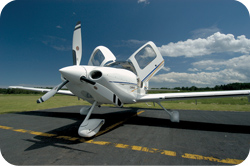This June 2016 SR-20 crash at KHOU comes to mind: http://www.kathrynsreport.com/2016/06/cirrus-sr20-n4252g-safe-aviation-llc.html
Here's 3-D animation including ATC audio. I wonder if Cirrus' safety features gave the pilot a false sense of security in light of her limited pilot skills:
Here's 3-D animation including ATC audio. I wonder if Cirrus' safety features gave the pilot a false sense of security in light of her limited pilot skills:


